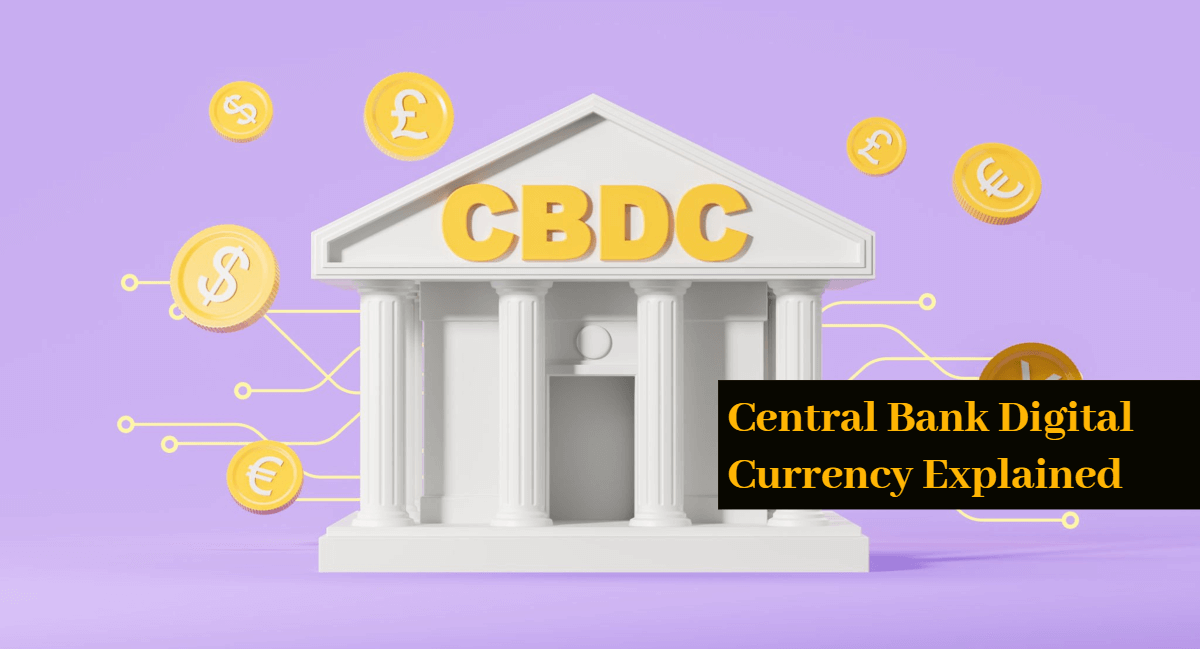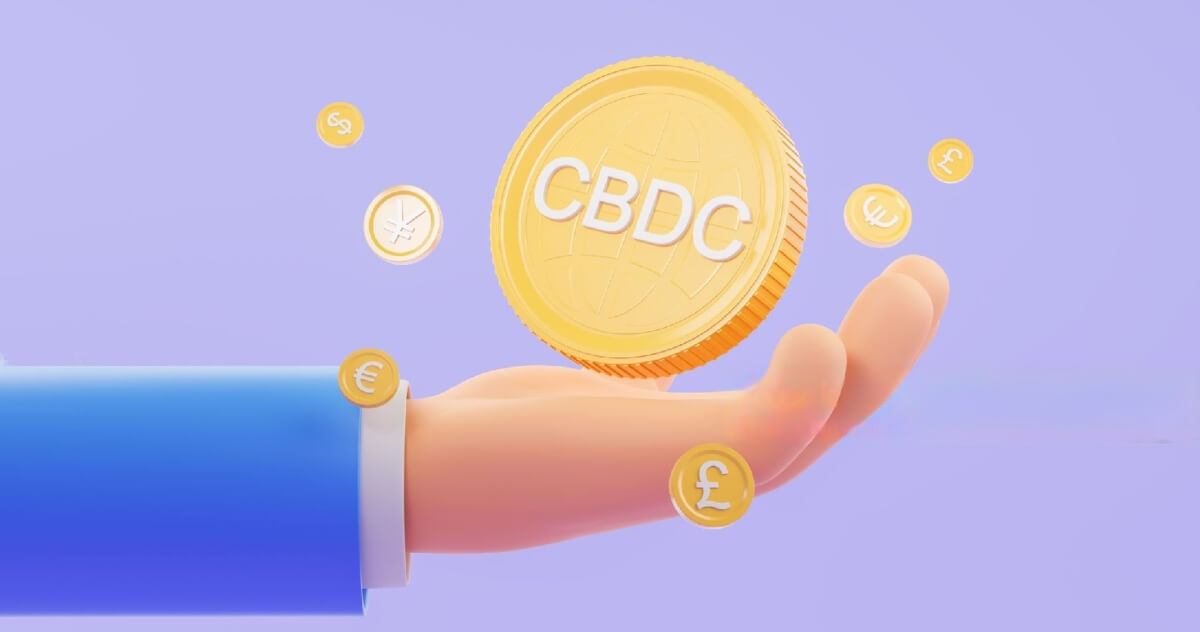
You know, money has come a long way. Back in the day, it was all about trading goods like goats for wheat, or using shiny metal coins. Then, we upgraded to paper bills and plastic cards. But now, we’re in the digital age, and it’s changing again.
In this digital age, Central Bank Digital Currency, or CBDC for short, has emerged. It’s like the next big thing in the world of money. Imagine your regular dollars or euros, but in a digital form backed by the government. Sounds pretty sci-fi, right?
Well, it’s real, and it’s happening.
What Is CBDC?
So, what exactly is CBDC? Central Bank Digital Currency is a digital form of a country’s official currency. Think of it as a fancy, government-approved version of those digital wallets we use for online shopping. The key difference is that it’s issued and regulated by the country’s central bank, making it as official as it gets.
Purpose and Objectives
Why, you might ask, are they creating this digital currency? Well, there are several reasons.
- For one, it’s a modern response to the changing ways we use money. CBDC is like the central bank’s way of saying, “Hey, we’re staying with the times.”
- We’re using physical cash less and less these days and digital transactions are taking over.
- CBDC aims to provide a safer and more stable form of digital currency. It’s like the government’s way of making sure digital money is trustworthy and secure.
- Plus, it could make cross-border transactions easier and more efficient.
Historical Context of CBDC Development
The idea of CBDC isn’t entirely new. The emergence of cryptocurrencies, starting with Bitcoin in 2009, spurred conversations about the potential for digital currencies issued and regulated by central authorities.
The concept of CBDCs started gaining serious attention and traction in the financial world in the 2010s. So it’s not like central banks just woke up one day and decided to go digital. No, it’s been brewing for a while.
With the rise of cryptocurrencies like Bitcoin and the growing trend of cashless transactions, central banks around the globe thought, “Hey, we should have a say in this digital money game too.” Consequently, they started conducting research, pilot projects, and feasibility studies to understand how they could implement digital versions of their national currencies that they could control.
Their aim is twofold: to ensure they stay relevant in this digital era while maintaining the stability of their financial systems.
CBDC Wallet
Now that you know what CBDC stands for, how do you actually use it? Well, you’ll need a CBDC wallet. Think of it as your digital wallet for the future. It’s where you’ll store and manage your digital cash. Just like your regular wallet, but on your smartphone or computer.
How to Obtain and Use a CBDC Wallet
Getting a CBDC wallet is usually very simple. You can download an app provided by your central bank or a trusted financial institution. Once you’ve got the app, it’s a bit like setting up an email account. You’ll create a secure password, and there you have it – your very own CBDC wallet.
To use it, you can receive CBDC from others, pay for goods and services, and even transfer money across borders. It’s all done digitally, making transactions more convenient and secure.
Security and Accessibility Features
Now, you might be wondering if this is safe. Well, central banks and tech experts are working hard to make CBDCs secure. They use advanced encryption to protect your funds and transactions. Plus, CBDCs are designed to be accessible to everyone, so you don’t need to be a tech wizard to use them.
Pros and Cons of CBDC
Like everything, CBDC comes with its fair share of pros and cons. Let me break it down for you.
Pros of CBDC Adoption
CBDCs have their perks, and here’s a few of them:
- Enhanced Payment Efficiency: Imagine you can send money to a friend instantly, 24/7, without going through a bank or waiting for days. That’s one of the big pluses of CBDCs. They could speed up transactions and make the whole payment system way more efficient.
- Financial Inclusion: CBDCs want to bring more people into the financial world. Even if you don’t have a fancy bank account, you could still access CBDCs. That’s a game-changer for folks who are currently excluded from the financial system.
- Reduced Counterfeit Risk: Digital currency can be super secure. With CBDCs, the risk of counterfeit money floating around could be greatly reduced. That’s good news for everyone’s wallets.
Cons and Challenges
1. Privacy Concerns
Some worry that CBDC might infringe on your privacy. Since it’s all digital, every transaction could be tracked. It’s like having someone peek into your wallet whenever you buy something.
Cons and Challenges
But, of course, there are challenges and concerns too:
- Privacy Concerns: With everything going digital, there’s a worry about data privacy. If all our transactions are in a digital ledger, that could mean more surveillance and less financial privacy.
- Centralization vs. Decentralization: Some people are concerned that CBDCs could give central banks too much power. After all, they’d have control over the entire monetary system. It’s a bit of a balance between centralization (where a single entity has control) and decentralization (where power is spread out).
- Technological Barriers: Going digital is great, but not everyone has the latest gadgets or internet access. So, there’s a challenge to ensure that CBDCs are accessible to everyone, regardless of their tech-savviness or where they live.
CBDC vs. Cryptocurrency: Key Differences and Similarities

CBDC and cryptocurrencies are like cousins, not twins. In other words, CBDCs and cryptocurrencies share some similarities, but they’re fundamentally different.
CBDCs are government-backed, centralized, and typically tied to the traditional currency of a country. Cryptocurrencies, on the other hand, are decentralized and not controlled by any central authority. Think of CBDCs as the digital version of your national currency, while cryptocurrencies are like a new, global form of money.
But they’re not enemies. Despite their differences, CBDCs and cryptocurrencies have common goals. They both aim to make payments faster and more secure. Additionally, they could reduce the reliance on cash, which is costly to produce and handle. So, there’s some tech love shared between CBDCs and cryptos.
But how could CBDCs impact the cryptocurrency ecosystem?
Now, when CBDCs fully enter the game, it might shake things up in the crypto world. Some say it could bring more legitimacy to cryptocurrencies. Others worry it might challenge the current crypto system. It’s like a new player entering the field; we’re not sure if they’ll be buddies or rivals yet.
Countries Embracing CBDC
Alright, let’s take a trip around the globe. Who’s leading the CBDC race?
According to a recent study by the U.S.-based Atlantic Council think tank, 130 countries, representing 98% of the global economy, are exploring digital versions of their currencies. Almost half of them are in advanced development, pilot, or launch stages. All G20 countries, except Argentina, are now in these advanced phases.
Eleven countries, including some in the Bahamas and Nigeria, have already launched their CBDCs, the “Sand Dollar” and “eNaira“. China is conducting extensive pilot testing involving 260 million people and 200 different scenarios. India and Brazil plan to launch digital currencies next year. The European Central Bank is moving forward with its digital euro pilot, with a possible launch in 2028.
In the United States, progress on a digital dollar is primarily focused on a wholesale (bank-to-bank) version. The research suggests that work on a retail version for broader public use has stalled. The global interest in CBDCs is driven by the declining use of physical cash, the challenge posed by cryptocurrencies like Bitcoin, and geopolitical considerations.
While the progress is notable, it’s essential to recognize that not all countries have experienced a successful adoption of CBDCs, as seen in Nigeria, Senegal, and Ecuador, where the uptake has been disappointing or development was canceled.
Will CBDC Replace Cash?

Time to peek into the crystal ball and think about whether CBDCs will replace cash – that’s a big question!
Cash has been with us forever, right? It’s got history, it’s tangible, and it’s been the go-to for buying that candy bar or paying your rent. But, the world’s changing. People are using digital payments more, and cash use is declining in many places. We’re seeing the evolution of money.
CBDCs bring a unique challenge to cash. They’re digital, so they’re on your smartphone, your computer – you don’t have to carry bills and coins. So, yes, there’s a real chance that CBDCs could affect how we use cash. But, don’t worry, cash won’t disappear overnight. It might just become a bit more special.
The big question, however, is, what’s next for cash? Will we still carry wallets filled with bills in a few years?
The crystal ball gets a little cloudy here. Whether CBDCs replace cash entirely depends on how people adapt to this digital shift. It’s a bit like how e-books didn’t completely wipe out printed books – they coexist.
Many experts believe that in the future, CBDCs and cash might cohabitate. Think of them as partners in the financial ecosystem. You’ll choose which to use based on your needs and preferences. It’s like having both a smartphone and a classic flip phone; each has its time and place.
In essence, CBDCs are evolving the way we interact with money. They’re adding a new chapter to the book of currency. And while cash might not rule the roost as it once did, it’s unlikely to vanish entirely. So, whether you’re a fan of crisp banknotes or sleek digital wallets, the future of money promises to be versatile and exciting.
